
Logan: Last Action Hero
Cinematographer John Mathieson, BSC creates a gritty sense of on-location realism for this dramatic conclusion to Wolverine’s screen saga.
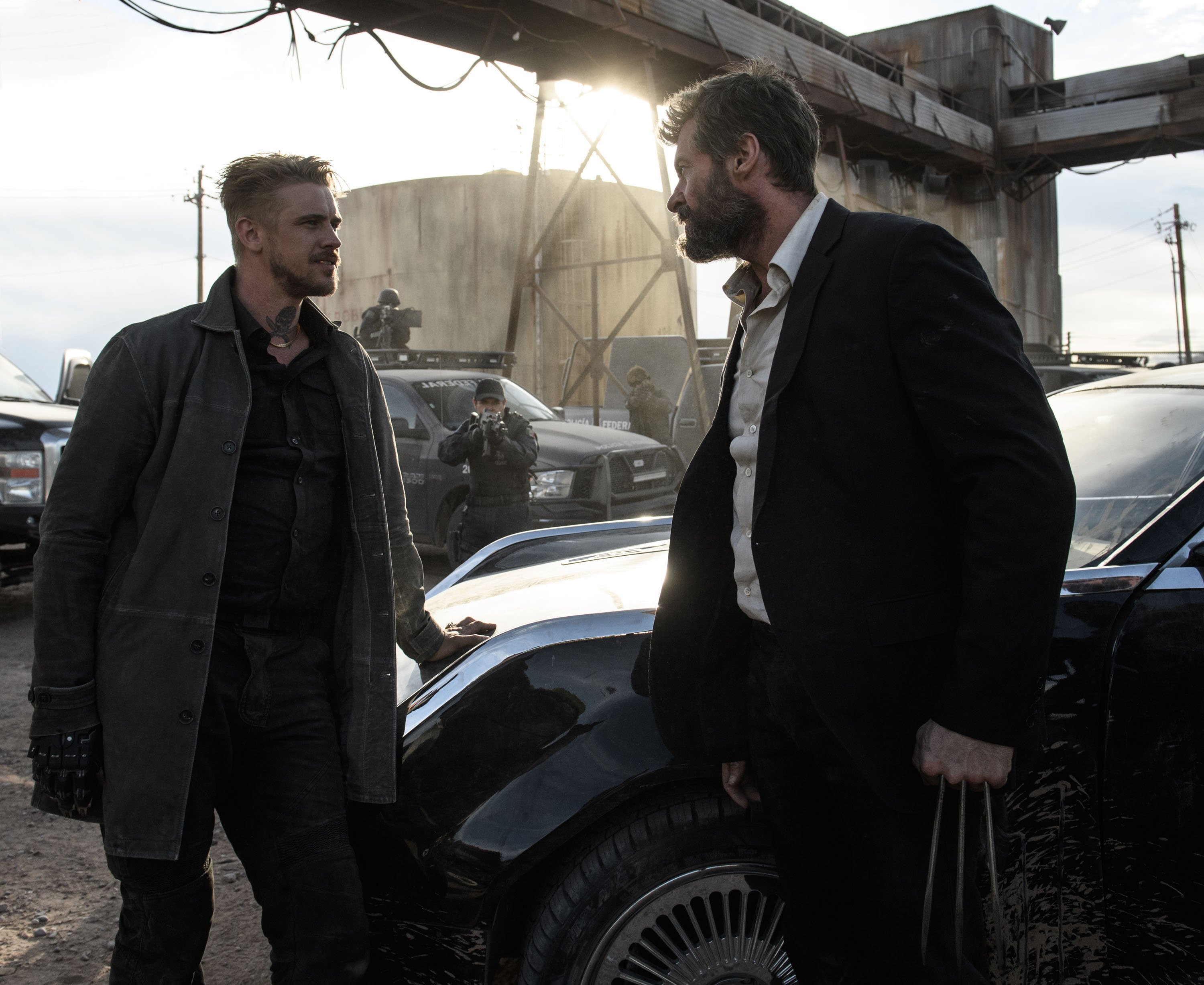
Unit photography by Ben Rothstein
At nearly 200 years old, Logan (Hugh Jackman) isn’t as agile as he used to be. The adamantium-clawed warrior once known as Wolverine walks with a limp, coughs, and can only tear into a bloodthirsty rage when absolutely necessary. And under Logan’s guardianship at their bedraggled desert hideout is powerful telepath Professor Charles Xavier (Patrick Stewart), former leader of the long-defunct X-Men, who in 2029 is now in his 90s and afflicted with seizures capable of temporarily paralyzing everyone around him. With the bulk of the world’s mutant population having been rounded up and dispensed with years ago, and the birthrate of new ones down to zero, Logan and Professor X are trapped without recourse, clinging to a dream of someday buying a “Sunseeker” and heading out to sea.
Enter a young girl named Laura (Dafne Keen) with powers remarkably similar to Logan’s, who is being pursued by a cadre of unsavory operatives. And so the timeworn heroes head once more into the breach, embarking on a perilous road trip to save the next generation.
Logan, directed by James Mangold and shot by John Mathieson, BSC (The Man From U.N.C.L.E., X-Men: First Class, Kingdom of Heaven, Gladiator), is a raw, brooding meditation on mortality that pits fear against hope as it looks to the future — with a photographic style to match. Mathieson, for his part, was initially cautious about becoming involved. “[Executive producer] Joe Caracciolo asked me a couple of times to do it,” he says. “I said no. I was hoping to do a film in the desert, a really low-budget film.” But when the other job fell through, “Joe said, ‘Come and meet Jim [Mangold].’ And I said, ‘Okay — fine, great.’”
“We wanted to make Logan look rough. A diamond, but rough.”
— John Mathieson, BSC
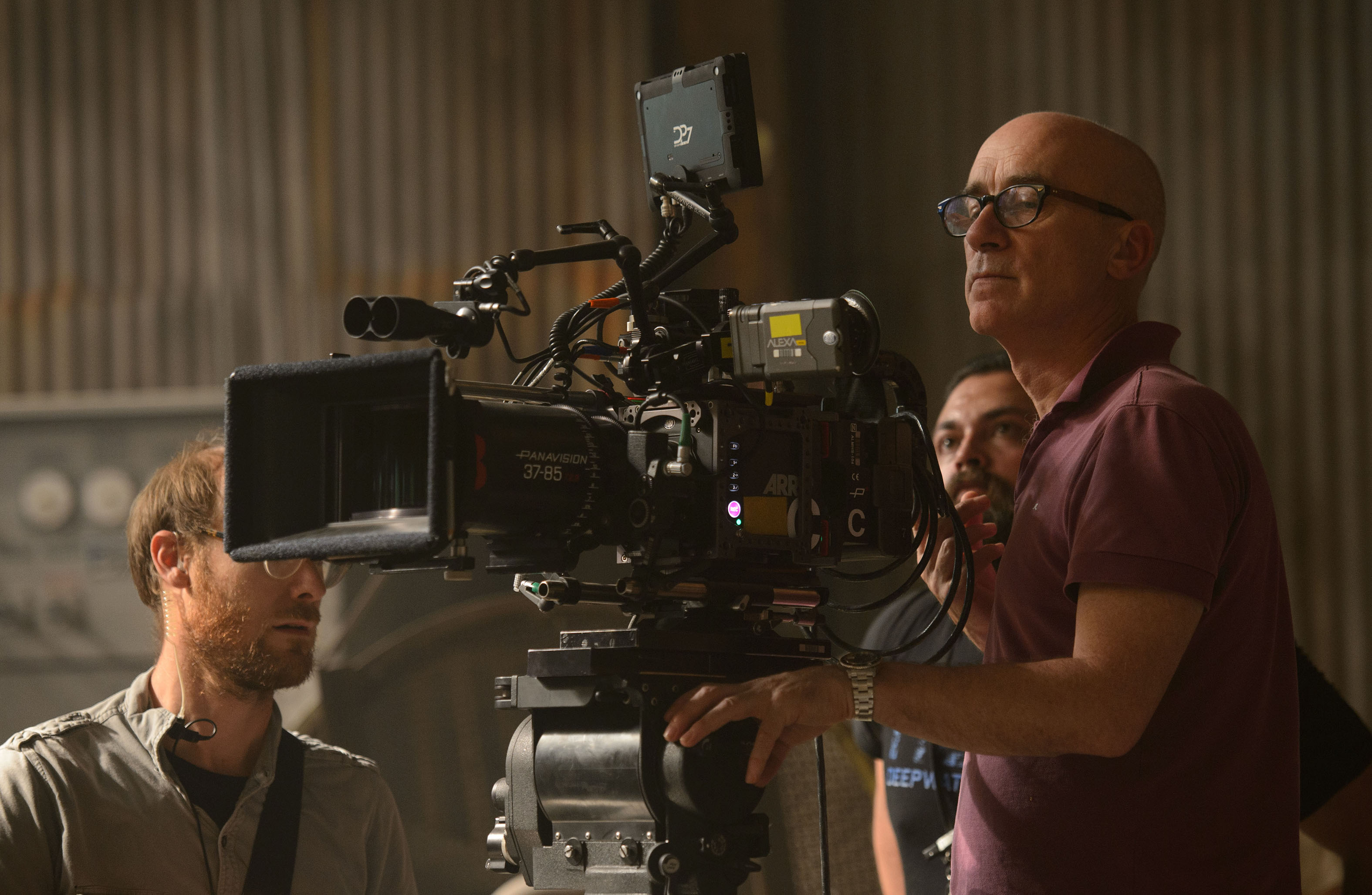
Less than a week and a half after returning to his home in London, Mathieson “got a visa sorted out and started prep,” he relates. “That was March 10 [2016, when photography began]. It’s been quite a fast film. That’s the way films should be.
“It wasn’t a big film to prep,” he continues. “It was a case of getting ’round the locations. We took private planes and flew around — New Mexico, Mississippi.” Main-unit photography consisted of a 73-day shoot and was based mainly in New Orleans, La. The largely exterior nature of the film simplified things, as Mathieson explains. “When you’re prepping something like that, it’s usually the lighting that’s the big issue,” he says. “I never really light exteriors; I never got the hang of that. I wasn’t too worried about dragging 12 18Ks up a mountain. You can do far more with silks and 12-by-12 blackouts.”
The photography is designed to emphasize the rawness and heat of the desert locations. “We wanted to make Logan look rough,” Mathieson notes. “A diamond, but rough. Deserts are hot and horrible — none of the sweeping soft dunes, Lawrence of Arabia stuff.”
References, he says, included “road movies. Two-Lane Blacktop, Thunderbolt and Lightfoot. I was going to make a great American road movie, [with the characters] starting in Mexico, moving up through New Mexico, Utah, Wyoming, Montana, and escaping into Canada.”
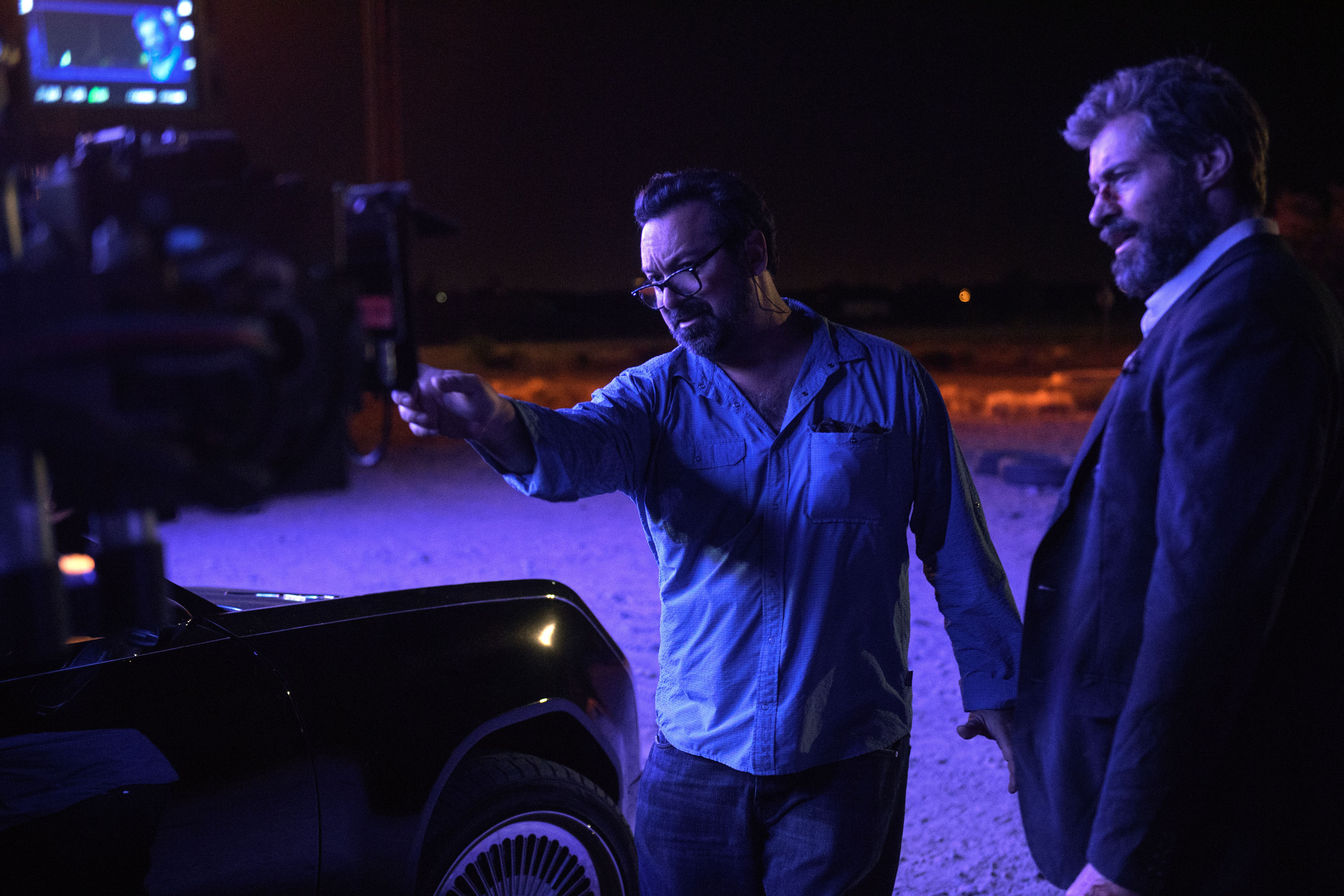
Equipment included three Arri Alexa XTs and one Alexa Mini, which were mainly paired with Panavision’s E Series anamorphic lenses. In certain instances, such as when visual effects required it, spherical Zeiss primes were used, and the cameras were set to Open Gate mode to maximize resolution when cropping to match the final 2.39:1 aspect ratio. The production also carried two anamorphic zooms: a Panavision AWZ2.5 37-85mm (T2.8) and a Cooke MK2 Super Zoom 50-500mm (T5.6). Spherical zooms included a Technovision Cooke Varotals and an Optica Elite 120-520mm (T2.8).
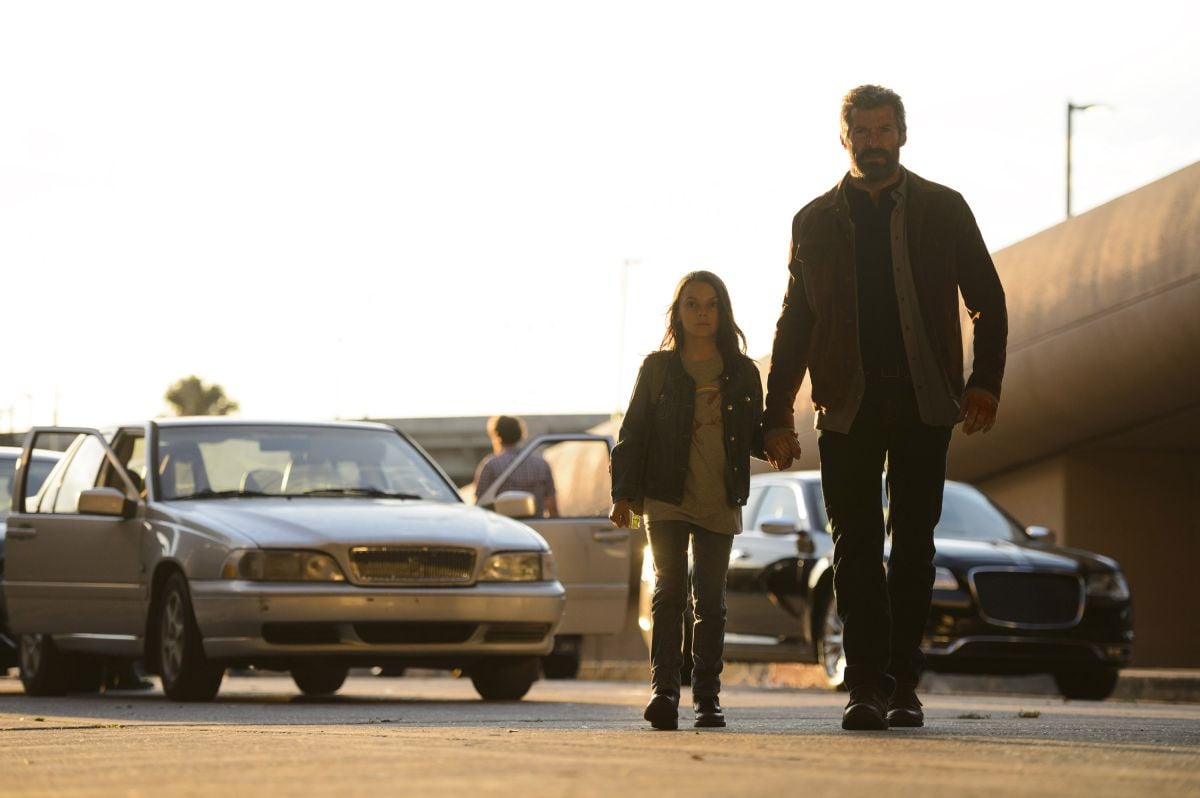
Panavision’s Frazier Lens System was something that Mangold “got quite excited about,” Mathieson recalls. “We used it to ‘study’ Hugh when he’s popping bullets out of himself. It increases the depth so you can see the background. It [has to do with] getting the lens away from the camera body — they do have a weird optical quality.” (For more about the Frazier Lens, see AC, Feb. 1999.)
In Logan’s opening night-exterior, a large LED billboard — supplemented with modular 2'-square LED units — drove the lighting for the scene, emitting images with 5,600K daylight color temperature in addition to magenta, blue and violet. “We supplemented and bent that source with high-power lights including 20Ks and Jumbos,” Mathieson explains. “It is a tribute. Prince died during the shoot. I lit the sequence with a purple color — I used to use that on him. Purple with Chrome Orange coming through. When a light has a color on it and it’s up in the air, you think it must be some sort of industrial vapor light. By coloring it, you can hide a few sins.”
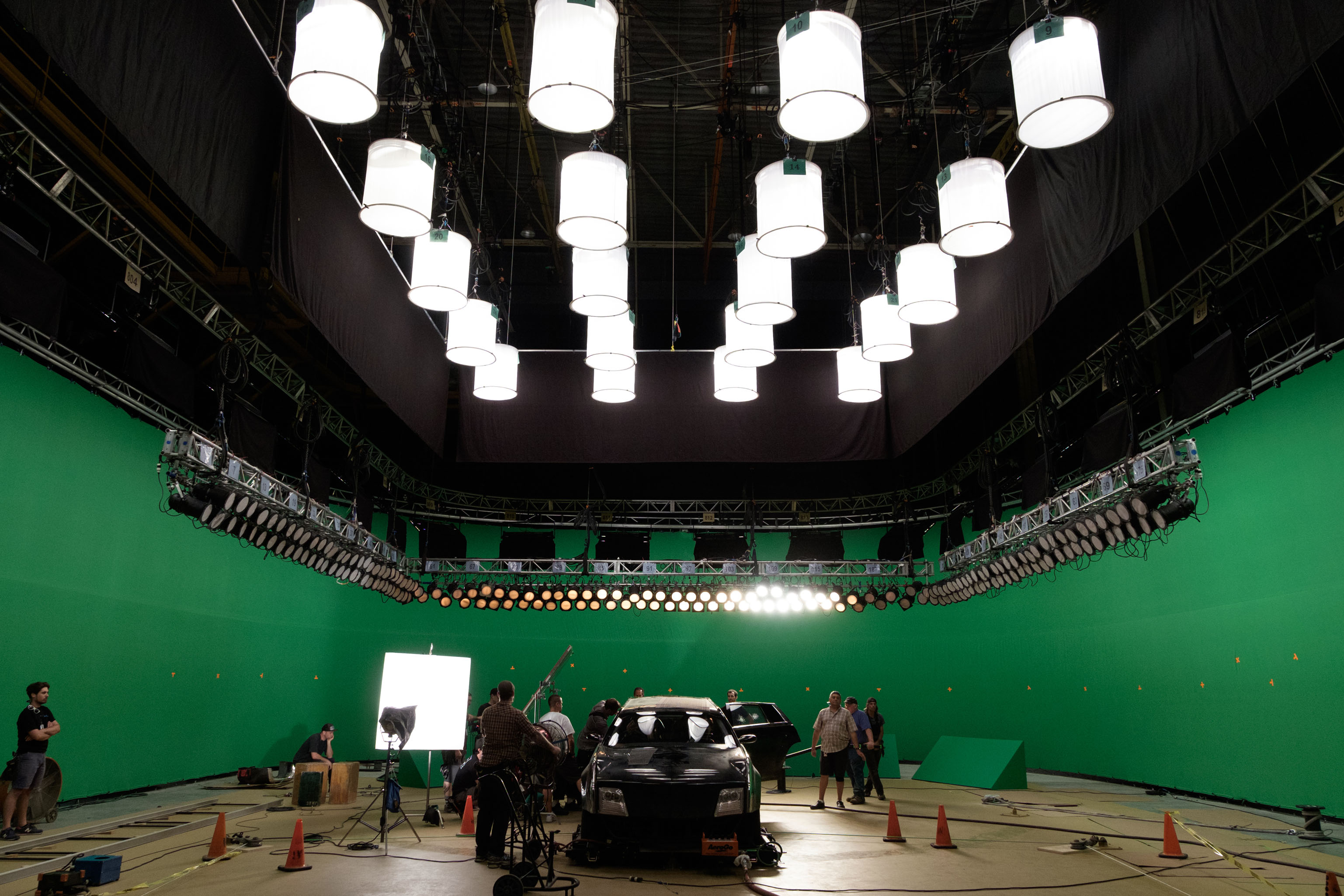
The production built key sets at New Orleans’ Big Easy Studios, which is located at NASA’s Michoud Assembly Facility. “They had these huge stages where the side opened up like gigantic garage doors,” Mathieson says. “Our collapsed-water-tank [interior] set was this huge circular construction. With the studio door open, you’d go past it and see this big circular thing being built and think, ‘They’re making a spaceship out of plywood? They’ll never get to Mars!’ The set must have been 35' or 40' across. [The water tank is] fallen over and it’s ruptured, so there’s a big crack of light. I wanted to give the thing some shape. There were two or three 20K Molebeams at any one time, with a bit of smoke — not to make it smoky but to make the beam stronger. [The set] was ‘perforated,’ so we had to wrap it in silks.”

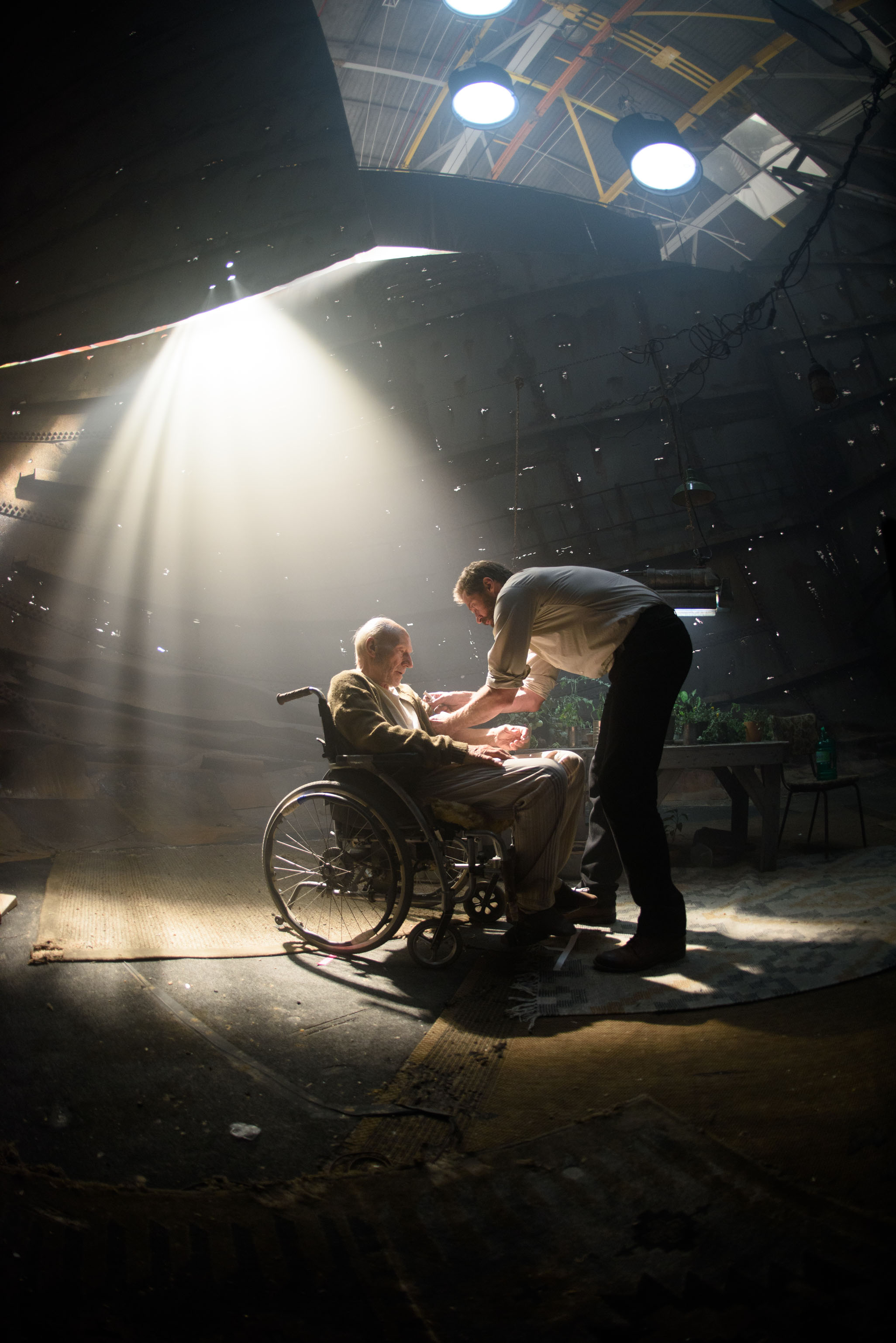
Shots depicting Keen’s character as the group drives into a city would have proven prohibitive on location, so instead Mathieson and co. devised a solution wherein on-set LED video panels would simulate passing lights. “The car was in the studio with blacks around it,” the cinematographer describes. “We put the screens up around Logan’s Chrysler E8 limo — one behind her, one in front of her, one lower down. Basically, it’s a little close-up of her looking out of a window — with raindrops. I always put raindrops; it makes it sparkly.” As background plates would be needed to play on the LED screens, “I took a Sony a7S II and rode down Canal Street on a bicycle, looking left, looking right, forward, back.”
Another special technique was required to depict the professor suffering his telekinetic seizures, which produce a deafening sound and physically immobilize everyone nearby. “How do we [visualize] this resonating, crippling, earsplitting sound?” Mathieson wondered. “‘How do you do something like that with the camera? [Visual-effects supervisor Chas] Jarrett said, ‘Shake it, shoot it slightly wider, and I’ll stabilize it.’” The result is a twitching, restive motion-blur effect that relied on a 358-degree shutter angle, produced manually on an EasyRig by camera operator David Luckenbach and finalized by Jarrett’s postproduction techniques.
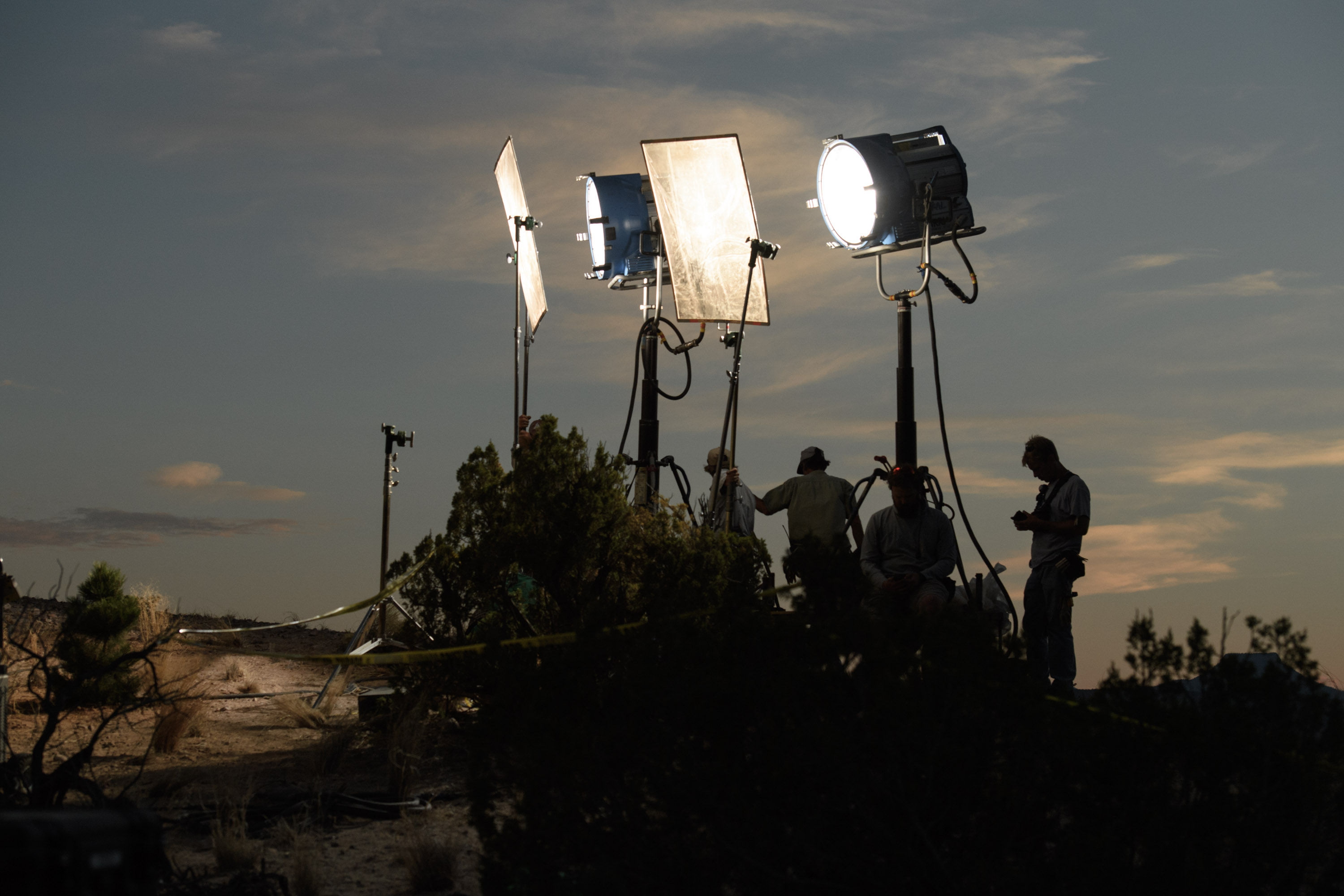
All Alexa material was recorded in ArriRaw. Digital-imaging technician Daniele Colombera explains that the workflow included dispatching “the pristine camera mags to Technicolor to create dailies. In order to preserve data integrity and safety, we used a Codex Vault 2 for on-set verification and backup, and the actual camera rolls were shuttled to the Technicolor On Location Services mobile lab, which was in New Orleans, New Mexico and Los Angeles when we were shooting there.”
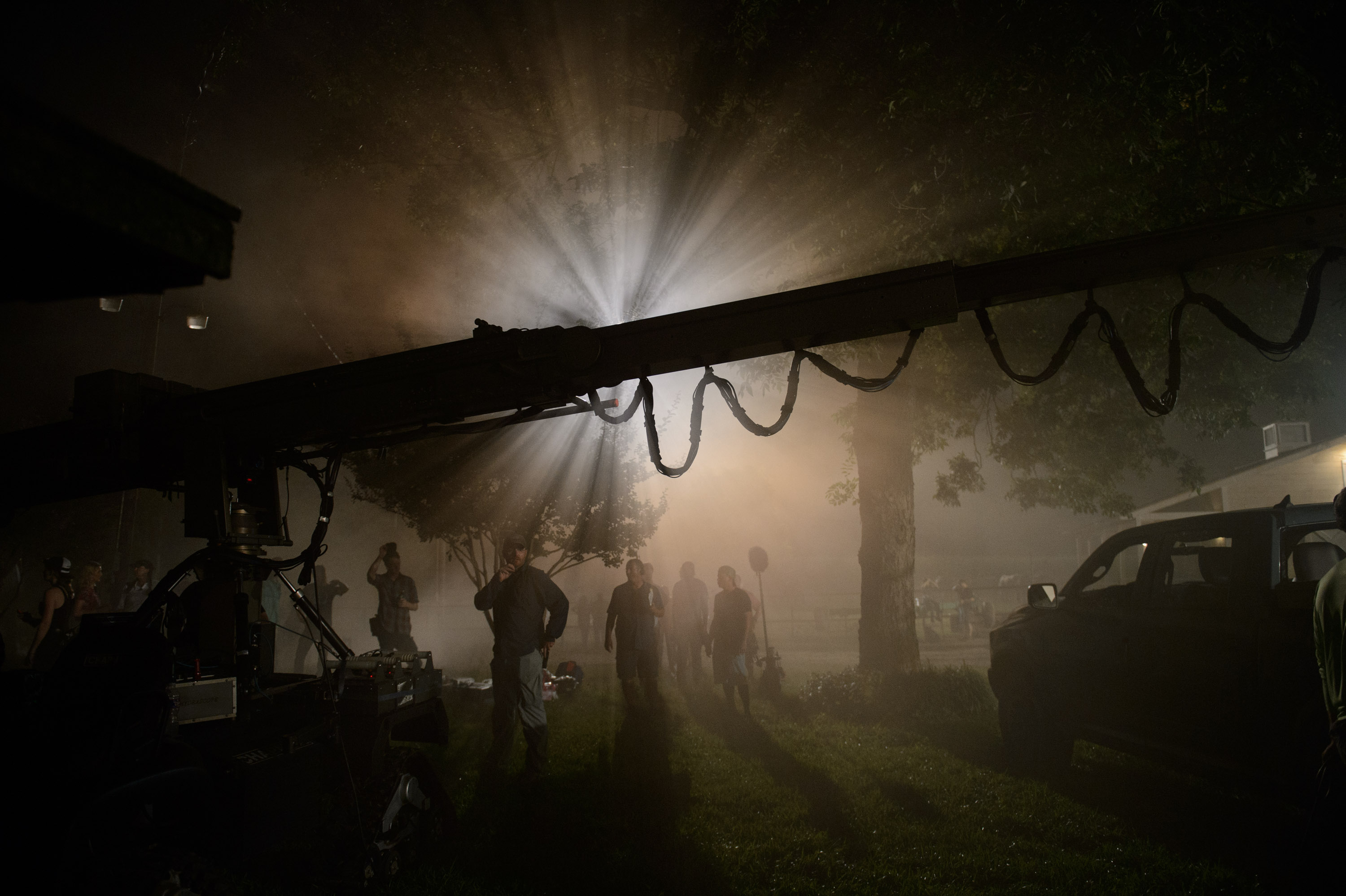
Colombera used Technicolor DP Lights 2.0 and Colorfront On-Set Live, referring to footage on several Sony PVM-A250 calibrated displays. “Every time we did a film break, I exported EMD [Express Metadata Dailies] folders, which are packets of information that include all camera metadata, the grading color pipeline, ASC-CDL values and uncompressed stills for each camera,” Colombera explains. “There are lots of advantages compared to the standard ASC-CDL workflow because the dailies operator is not applying the look based just off CDL values, but can see exactly what John and I saw on set, as well as extract each camera’s metadata and settings for redundancy.” Per Mathieson’s intentions, the cameras were set at 800 ISO. “We also rated the Alexa XTs at 1,000 and 1,280, except for a couple of night shots, for which 1,600 ISO was necessary,” Colombera adds.
Material intended to represent video shot clandestinely on a cellphone was recorded with Canon’s FS20, a deliberately low-res option that Colombera describes as “a consumer [grade], super-compressed, standard-definition camcorder with a 1/6-inch sensor.” Where this material depicted superpowers that required visual effects, Blackmagic Design’s Pocket Cinema Camera was used. “It had a much smaller sensor than the Alexa — actually Super 16-sized — and it could match a little bit better with the FS20, but it produced high-quality raw footage appropriate for visual-effects work,” Colombera notes. With visual effects added, this material was re-photographed with the FS20 as it played on a high-resolution monitor in order to match the appearance of the FS20-originated material.
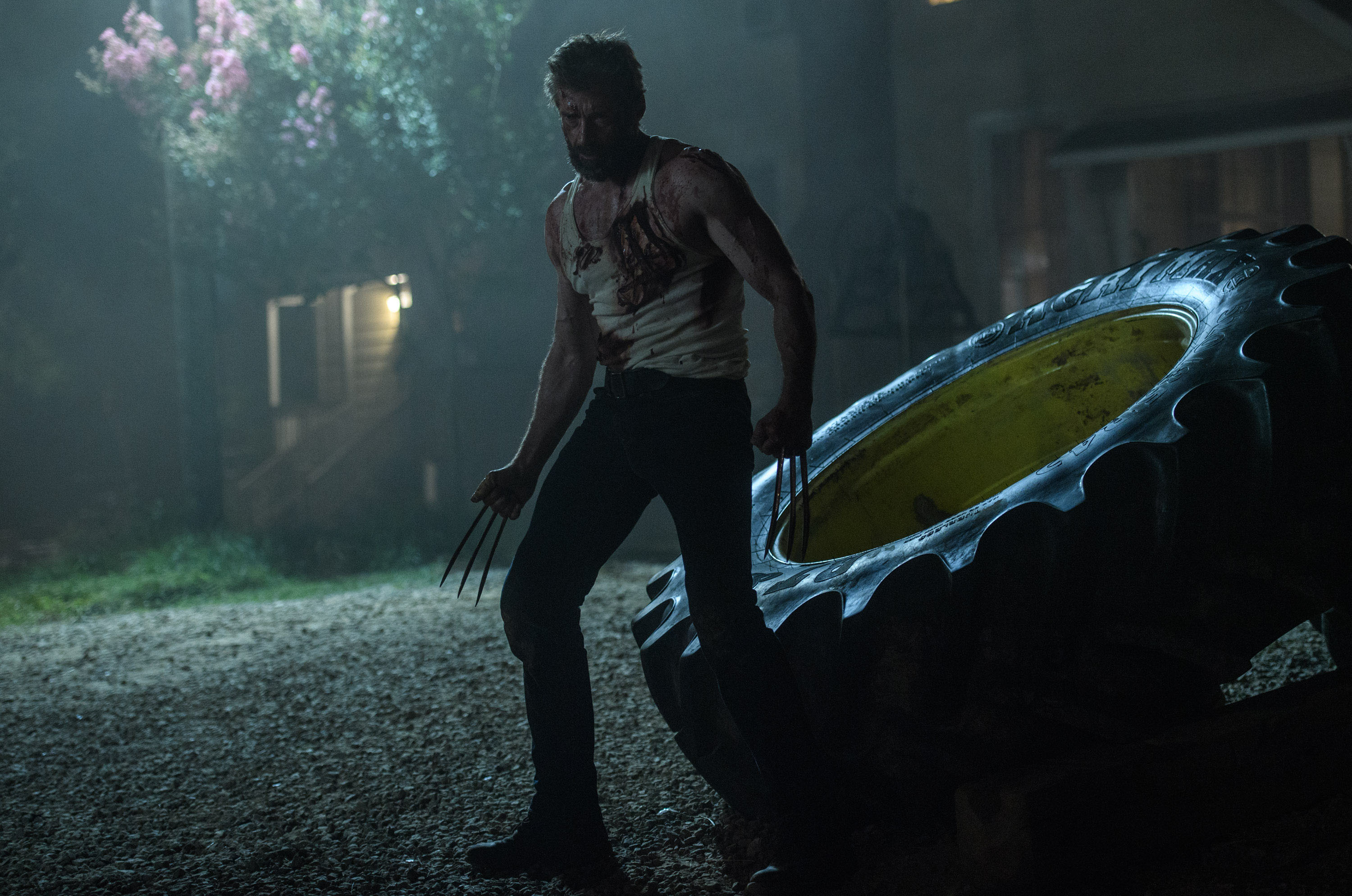
Postproduction took place at Technicolor in Los Angeles. Mathieson credits colorist Skip Kimball — with whom he had worked on Gladiator, Kingdom of Heaven and 47 Ronin — with a straightforward approach. “He’s very much an RGB guy,” the cinematographer says. “He works with the primaries. Once you start noodling with the image, taking the mid-tones, the black levels, the highlights, putting windows over everything, suddenly your photography looks very confused. If something’s burned out and a bit over-the-top, he won’t just say, ‘Oh, we’ll put a window on that.’ Rather, he’ll say, ‘Maybe this shot doesn’t look so good, and the next one, but these three together. …’ He sees the film as a whole.”
Considering Logan’s overall visual style, Mathieson muses, “There are a few moments of respite where things ease up, but in large part it’s oppressive and [the characters are] on their own. I had to follow the locations. I couldn’t just light what I wanted to light. It wasn’t a pretty-looking film.”








